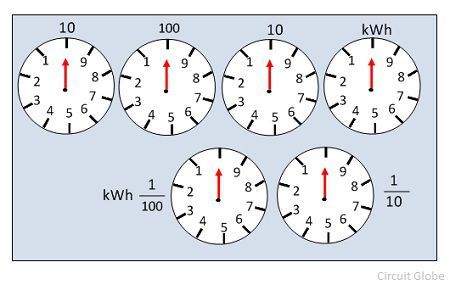Definition: The integrating instrument measures the total energy supplied by the circuit in a given interval of time. It is independent of the rate at which the total energy consumed. The watt hour meter is the example of integrating instruments. This type of meter directly measures the energy in watt hour.
Types of Integrating Instruments
The integrating instruments are mainly classified into two types. They are the clock meter and the motor meter.
Clock Meter
The clock mechanism has two pendulums and two sets of coils. One coil is energised by the current and the other by the voltage. The current coil is fixed, and the pendulum carries the voltage coil. The magnetic force pulls back the pendulum from fixed coils.
 The magnetic pull force the pendulum to swing back from the fixed coils. This cause the interaction between the pendulum. The one pendulum move forward, and the other becomes retard. The differences in the swinging of the pendulum indicate the energy.
The magnetic pull force the pendulum to swing back from the fixed coils. This cause the interaction between the pendulum. The one pendulum move forward, and the other becomes retard. The differences in the swinging of the pendulum indicate the energy.
Motor Meter
The motor meter is mostly used for measuring the energy. It has three parts. These are
- Operating System – This type of meter produces torque, which is directly proportional to the current. The operating system rotates the moving system.
- Braking System – This system induces the braking torque, which is directly proportional to the speed of rotation. The braking system makes the meter to run at a steady speed. The braking torque is generated because of the eddy current which is induced in the moving disc placed in the field of permanent.
- Registering System – The moving system is placed on the worm cut spindle. The train of the wheel fixed on the worm cut spindle with the help of the pinion. The wheel rotates because of the rotation of the spindle. The spindle has hands which pass over the dials and registered units in tens, hundreds, tenths and so on.
The clock meter is very expensive, and hence motor meter is used in industries.
